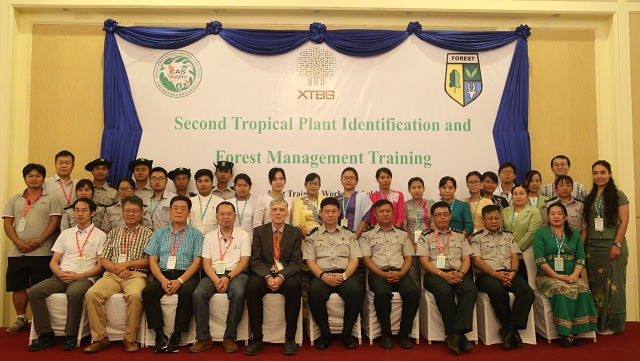27 young plant researchers from institutes and universities of Myanmar gathered together in Naypyitaw for the Second Tropical Plant Identification and Forest Management Training from September 17-24.
According to Prof. Quan Ruichang of Xishuangbanna Tropical Botanical Garden (XTBG), biodiversity studies in Myanmar are relatively weak compared to other biodiversity hotspots in Southeast Asia.
“Myanmar has recorded about 12,000 plant species up to now. However, Yunnan has a record of 15,000 plant species. Larger in area, richer and more diverse in climate and vegetation types, Myanmar is expected to have plants of 15,000-20,000 species. More new species are to be found”, said Prof. Quan Ruichang.
“Although our primary goal is not to discover new species, plant identification is a basic skill for forest management and botanical studies”, said an expert at the training course.
The course is the second of its kind organized by the Southeast Asia Biodiversity Research Institute (SEABRI) of the Chinese Academy of Sciences (CAS), in conjunction with Forest Department of Myanmar. Its aim is to improve capacity building of young plant researchers in Myanmar.
SEABRI is pleased to have excellent plant taxonomists from China, Myanmar and USA offering courses to identify plants found in Myanmar. Prof. Ma Jinshuang, Prof. Zhu Hua and other plant taxonomists are lecturers for the course.
Participants will be presented with general plant identification principles and diagnostic field characteristics to enable ready distinction between species with very similar appearances. They will also have field investigations and self-study.
Officials from Forest Department of Myanmar Ministry of Forestry and other related researchers were present at the opening ceremony of the training.

Mr.Nyi Nyi Kyaw, director of Forest Department of Myanmar Ministry of Forestry, makes an opening speech

Teachers and trainees pose a group photo


